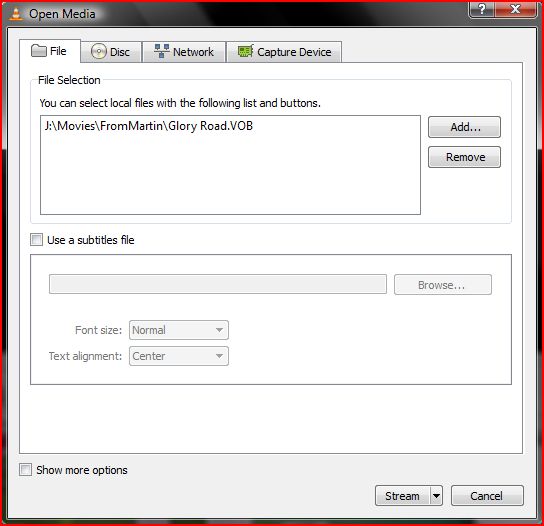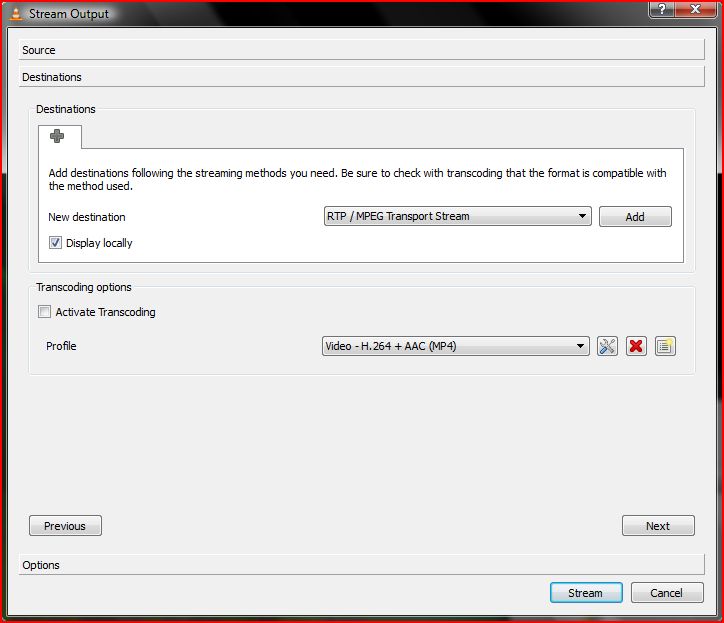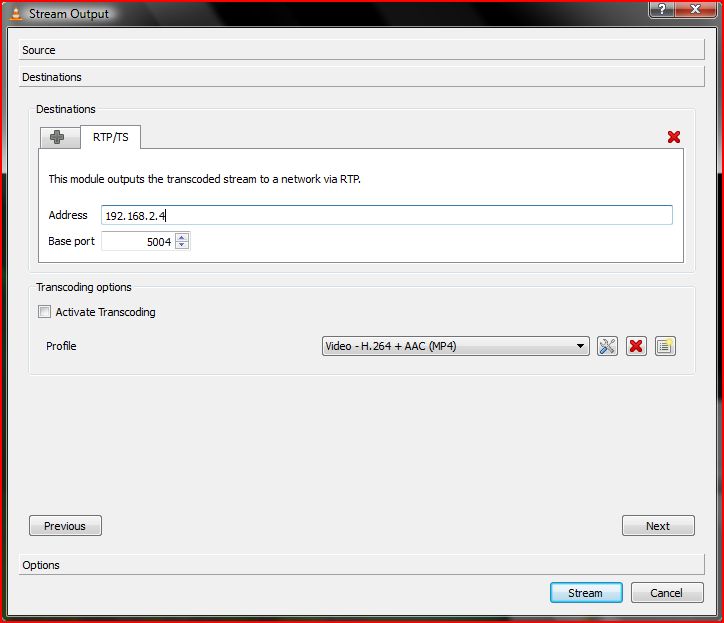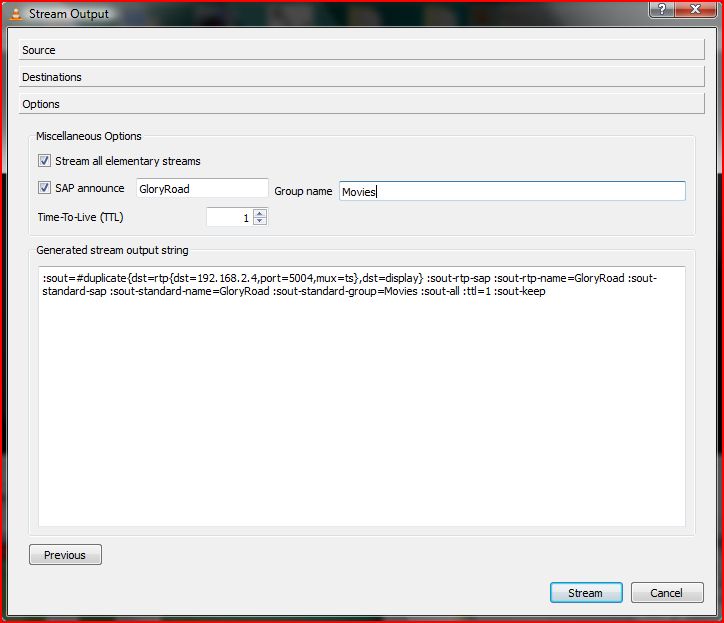Documentation:Streaming HowTo/Easy Streaming Newer Versions
Contents
Introduction
Since the documentation on streaming is fairly old, this wiki page was written to show how to do streaming on newer versions of VLC Media Player. EDIT: This page looked incomplete, and I figured out a way that worked for me on my particular system, so I thought I'd document it in the hopes that it helps someone else in the future. My setup is as follows:
- Server: Windows Vista Machine running VLC 1.1.11 (IP Address: 192.168.2.2)
- Client: Windows 7 Machine running VLC 1.1.11 (IP Address: 192.168.2.4)
- Two computers are on the same subnet (192.168.2.X). I am able to ping from each machine to the other.
Goal: I have a bunch of video files ripped from DVDs that I want to share between my server and my client(s). This is simply to be able to keep all my movies in one central location.
SERVER SETUP: Streaming using the streaming dialog
- Launch VLC and then push Media -> Streaming... (You should see a dialog like the one below)
- On the window that pops up click on the tab of the media you want to stream from. I chose to stream from a file (a .vob file). I add this file to the "File Selection" list.
- I left "Use a subtitles file" unchecked
- Hit the "Stream" button at the bottom of the dialog. This pops up a new streaming options dialog. The streaming options dialog has 3 sections: Source, Destinations, and Options.
Source Dialog
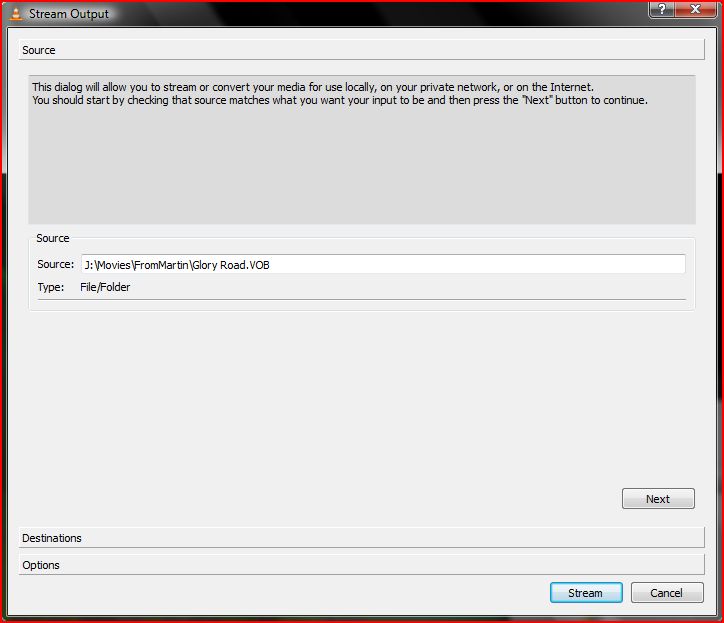
Destinations
- Under Destinations, I selected "RTP / MPEG Transport Stream", since this is an awesome way to send data across the network (that's what RTP is all about).
- In my case, I want to see the movie both on the server and the client (it gives me warm fuzzies to see the movie in both places), so I check the "Display locally" checkbox
- Under "Transcoding options", I uncheck "Activate Transcoding" because I happen to know that my videos are already encoded just fine (and when I tried transcoding, that didn't seem to work so well for me)
- Now click "Add". Specify the IP address of the client (in my case 192.168.2.4 - if you don't know what yours is, open a command prompt (cmd.exe), and run "ipconfig /all")
- Hit "Next" to go to the final options screen
Options
- Under "Options", I selected "Stream all elementary streams" (not completely necessary it turns out...this probably sends more than I really have to), and I also checked "SAP announce" and gave it a name (I chose the name of the video file...seemed logical) and a group name (doesn't seem to be all that important)
- Hit "Stream", and your movie should start playing locally (and it should start streaming)
CLIENT SETUP: Receiving the stream
Since I configured SAP in the server, it's easy to open the stream on the client: I just open up the media browser view of VLC (by clicking on the button next to the full screen button) and look under "Local network". I see the name of my SAP stream show up, and I double click it. Voila!! Streaming video! **Football style chest bump**
Note: you can start and stop the stream on the client, just as long as you don't catch up to the server. Pretty nice!
